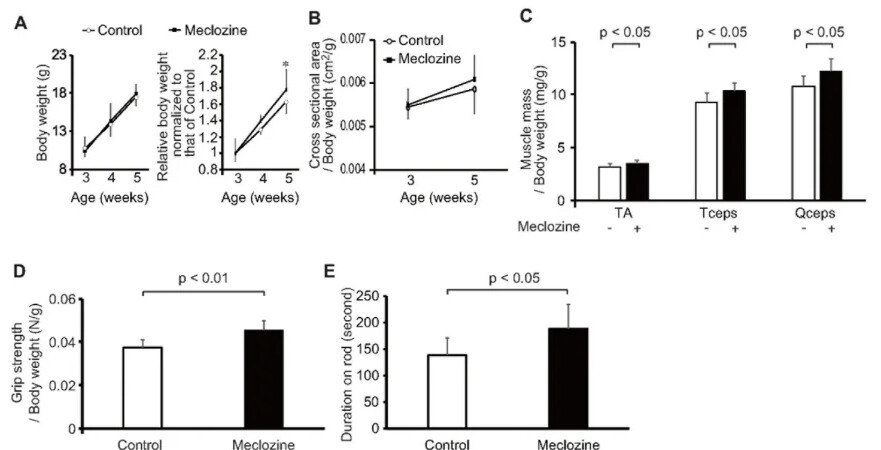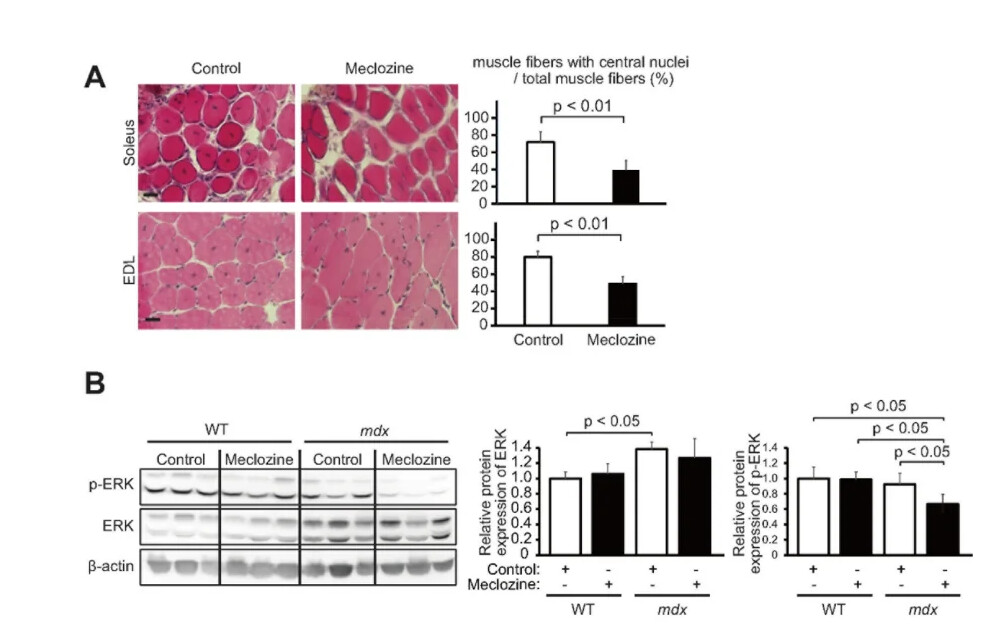300 mg sounds like a very large dose when 25 mg is psychoactive and reduce motion sickness.
It is taken in large doses as a sleep aid. I have taken doses up to 100mg with no ill effects. It is an effective sleep aid for some and didn’t have any next-day after-effects for me. I agree that 300 mg seems like a lot, but I don’t know because I haven’t found any long-term studies using that amount.
The recommended max dosage at one time seems to be 50 mg.
https://www.mayoclinic.org/drugs-supplements/meclizine-oral-route/before-using/drg-20075849?p=1
I think the right approach for these longevity compounds is to start with, what is used in clincial trials in humans? What is the common dosage? What is more likely to be safe? Nobody starts taking 24 mg rapamycin a day even though that’s estimated to be the conversion from rat to humans…
But the doses used in clinical trials are for indications other than aging. Those give us a clue about safety and side-effects, but they provide no rationale for using those doses for longevity purposes.
You’re right that (next to) nobody starts taking 24 mg rapamycin a day even though that’s estimated to be the conversion from rat to humans; the question is whether people taking the standard 6 mg once a week are therefore wasting their time, since the animal evidence is nearly the only relevant evidence we have. (The Mannick studies are of course relevant, but they could indicate nothing more than efficacy at boosting interferon-mediated immunity).
The standard dose of methotrexate for autoimmune diseases is 2.5 mg 2-4 times a week; the standard dose for some cancers is 15 to 20 mg weekly, and can go as high as several hundred milligrams.
It sounds impressive in this study, I don’t know what it means.
From reddit.
A patent from improving muscle mass apparently:
That does help in deciding the appropriate dosing for longevity though, as if you increase the dosage based on mice study you have to balance it with what’s determined safe in humans (longevity in humans).
What makes me uncertain mostly about meclizine is that it is psychoactive. Anticholinergic, etc.
The Mayo Clinic will never, never recommend the maximum therapeutic dosage for any off-label use of a drug. They are as conservative as WebMD. Many people on this forum are willing to experiment with rather high dosages of substances as long as they are well within the lethal dose range.
Rapamycin is an example, though there doesn’t seem to be a lethal dose.
I am excited that AnUser found this patent. This is the first time I have seen any dosing info for muscle hypertrophy
I haven’t taken meclizine in about a year.
Since I am currently in an increased muscle mass competition with some other older members of the forum and I have an ample supply of meclizine on hand, I will start taking it again at night before bedtime. 100 mg/day caused me no side effects that I am aware of, and I considered it a clean sleep aid in that, it had no morning-after effects such as daytime tiredness.
Since I am now testing monthly I will see if any of my markers change significantly.
Anti-histamines are generally not recommended for older people because of increased dementia concerns. After reading several papers, it seems that the studies were looking at people who already had dementia. I didn’t find a paper that said they cause dementia.
“the dose can be set so that the amount of active ingredient per day is 1 mg to 500 mg, preferably 5 mg to 300 mg, particularly preferably 10 mg to 200 mg. As the administration schedule, for example, once to several times a day, once every two days, or once every three days can be adopted.”
There are lots of observational studies finding use of anticholinergic drugs (including meclizine, diphenhydramine (Benadryl), and other anticholinergic antihistamines) is associated with later incident dementia.
http://dx.doi.org/10.1016/j.jalz.2012.02.005
http://jama.jamanetwork.com/article.aspx?doi=10.1001/jamainternmed.2014.7663
This study, however, did not find an association for antihistamines as a class:
https://jama.jamanetwork.com/article.aspx?doi=10.1001/jamainternmed.2019.0677
Just FYI, Dr. Miller is not a fan of senolytics. I agree, fisetin is out for me. However, I do think that when I get older (60+) I may want to use Dasatanib + Quercetin to lower senescent cell burden.
If you’re worried about senescent cells, the two best compounds to prevent them from forming are Rapamycin and Taurine AFAIK.
1840 ppm x 500 g food = 920 mg daily. It’s a huge dose and I was disappointed in them testing such a high dose. When I asked them why they decided to test such a large dose I didn’t get a good answer.
They will be testing a lower dose next time, but not a lot lower so even the dose they test next time will still be one that isn’t reasonably obtained by human through supplements which is also somewhat of a disappointment IMO.
I am not sure if this is relevant, but if the half life of Astaxanthin is very short in mice, it makes sense with with higher doze. I don’t know how much it differs for humans, but I assume the mice/human dosing calculations being done on different compounds is a bit wrong depending on the half life of compounds in mice vs humans.
Why would you expect the half life to be much shorter in mice? The half life is most certainly shorter in mice, but the difference is accounted for by the difference in metabolic scaling. My 920 mg daily estimate takes that into account.
if we humans takes to much Astaxanthin our poop turns pink and skin as far as I have read, the enormous quantities they fed the mice should have similar effect, but there is no mention of this in any studies. so the only thing I can think of is that mice metabolises this compound way different then us.
I don’t see why they would mention it. If they wanted to know how much is absorbed they would measure levels in the blood, not the color of the skin or poop of the mice.
The poop gets red from astaxanthin because of the fraction that isn’t absorbed. The skin is a much better indicator of what is actually being absorbed but people normally don’t get any pinkish skin from astaxanthin. I’ve only heard of people taking massive doses reporting on tiny differences in skin color. As for mice, they have fur, so you don’t see the skin color well. The parts of them that doesn’t have fur is already pretty pink so a slight increase in pink colour would be hard to notice.
When I was taking 20 mg of natural Astaxanthin a day, my poop definitely turned an orangish/reddish color, but not so at 10 mg. It may mean that our bodies (or just mine) have a hard time absorbing more than 10 mg of Astaxanthin.
I’ve gone up to around 400mg/day and while there is some mild to moderate reddishness in poops, other than that no issues. I think Astaxanthin stains most things it touches… when I put it in a smoothie, the entire contents turns red. But I don’t necessarily take that as a sign that its not going to mostly get absorbed into the blood stream.
Below could be huge, at least for men?
… an alternative to 17⍺-estradiol that may work even better…?
From Rich Miller recent Peter Attia podcast this week:
Mike Garratt collaborated with a guy named Mo Jain to look at steroids in the tissues of mice treated with 17⍺-estradiol (among other things), and he noticed something really interesting
- He found two steroids that were members of the estriol family (not estradiol) that were elevated at least 20-fold in males that got the drug
- [reported as estriol‐3‐sulfate and 16‐oxoestradiol 3‐sulfate, metabolized from 17⍺-estradiol]
The hydroxy version of estriol is great for males
- It’s actually at least as good as 17⍺-estradiol
- We won’t know until we have the last few deaths, but it’s terrific
- That was a good guess: you don’t need 17⍺-estradiol because the estriol works terrific
—
- The dataset is 90% complete, and we’ll probably start writing it up in a month or two when we have 90% of the mice dead, but we had 50% of the mice dead
- We’ve presented at meetings
—
- It was a male-specific production of estriol when 17⍺-estradiol was given
—
- To be clear …//… it’s 16-hydroxy estriol
—
To listen yourself, see the second half of the section starting at
The ITP study of 17⍺-estradiol: mechanisms of life extension and surprising sex differences [1:43:30]
I use Meclizine when I get Vertigo. Not sure i want to start taking it for anti aging. As for Astaxanthin, I might add it to my daily vitamine regime.
What is astaxanthin good for?
It’s most commonly found in Pacific salmon and is what gives the fish its pinkish color. An antioxidant, astaxanthin is said to have many health benefits. It’s been linked to healthier skin, endurance, heart health, joint pain, and may even have a future in cancer treatment.


